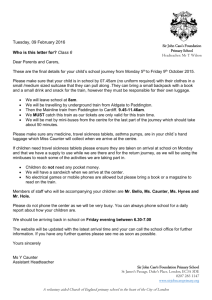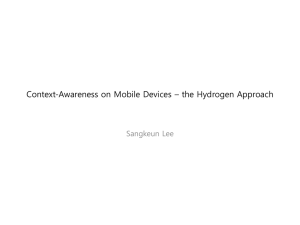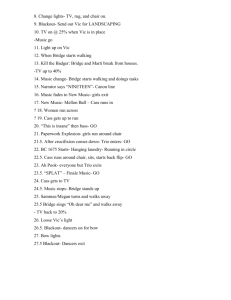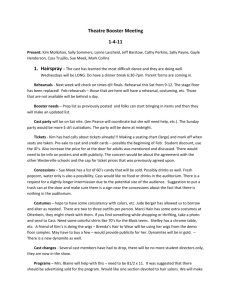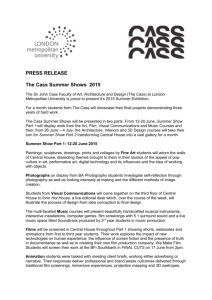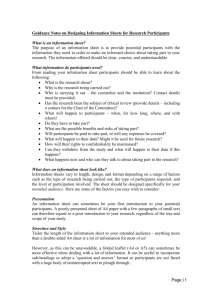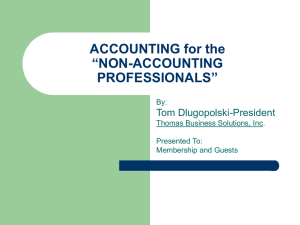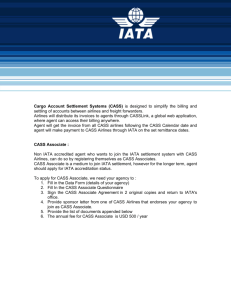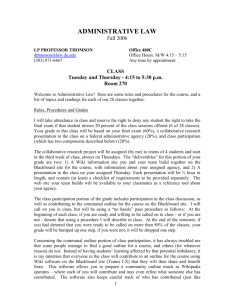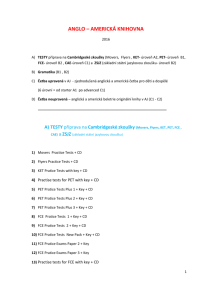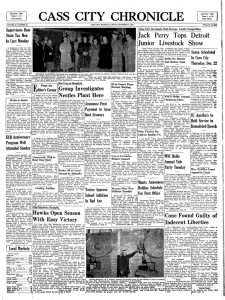Critical Analysis Strategy Sheets
advertisement
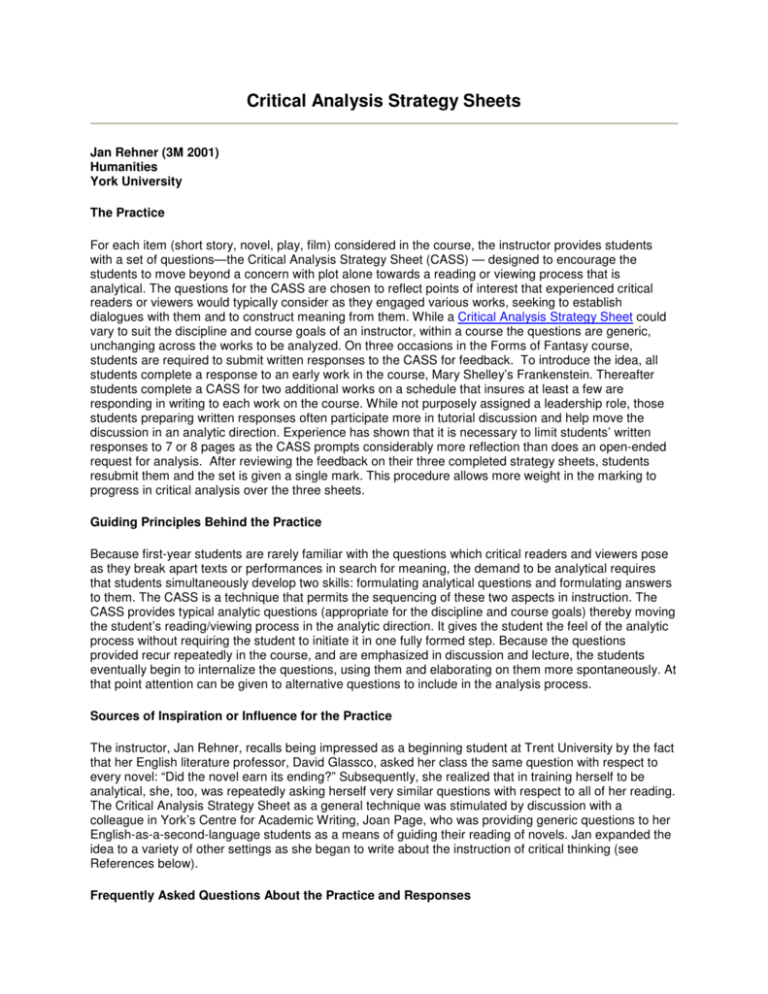
Critical Analysis Strategy Sheets Jan Rehner (3M 2001) Humanities York University The Practice For each item (short story, novel, play, film) considered in the course, the instructor provides students with a set of questions—the Critical Analysis Strategy Sheet (CASS) — designed to encourage the students to move beyond a concern with plot alone towards a reading or viewing process that is analytical. The questions for the CASS are chosen to reflect points of interest that experienced critical readers or viewers would typically consider as they engaged various works, seeking to establish dialogues with them and to construct meaning from them. While a Critical Analysis Strategy Sheet could vary to suit the discipline and course goals of an instructor, within a course the questions are generic, unchanging across the works to be analyzed. On three occasions in the Forms of Fantasy course, students are required to submit written responses to the CASS for feedback. To introduce the idea, all students complete a response to an early work in the course, Mary Shelley’s Frankenstein. Thereafter students complete a CASS for two additional works on a schedule that insures at least a few are responding in writing to each work on the course. While not purposely assigned a leadership role, those students preparing written responses often participate more in tutorial discussion and help move the discussion in an analytic direction. Experience has shown that it is necessary to limit students’ written responses to 7 or 8 pages as the CASS prompts considerably more reflection than does an open-ended request for analysis. After reviewing the feedback on their three completed strategy sheets, students resubmit them and the set is given a single mark. This procedure allows more weight in the marking to progress in critical analysis over the three sheets. Guiding Principles Behind the Practice Because first-year students are rarely familiar with the questions which critical readers and viewers pose as they break apart texts or performances in search for meaning, the demand to be analytical requires that students simultaneously develop two skills: formulating analytical questions and formulating answers to them. The CASS is a technique that permits the sequencing of these two aspects in instruction. The CASS provides typical analytic questions (appropriate for the discipline and course goals) thereby moving the student’s reading/viewing process in the analytic direction. It gives the student the feel of the analytic process without requiring the student to initiate it in one fully formed step. Because the questions provided recur repeatedly in the course, and are emphasized in discussion and lecture, the students eventually begin to internalize the questions, using them and elaborating on them more spontaneously. At that point attention can be given to alternative questions to include in the analysis process. Sources of Inspiration or Influence for the Practice The instructor, Jan Rehner, recalls being impressed as a beginning student at Trent University by the fact that her English literature professor, David Glassco, asked her class the same question with respect to every novel: “Did the novel earn its ending?” Subsequently, she realized that in training herself to be analytical, she, too, was repeatedly asking herself very similar questions with respect to all of her reading. The Critical Analysis Strategy Sheet as a general technique was stimulated by discussion with a colleague in York’s Centre for Academic Writing, Joan Page, who was providing generic questions to her English-as-a-second-language students as a means of guiding their reading of novels. Jan expanded the idea to a variety of other settings as she began to write about the instruction of critical thinking (see References below). Frequently Asked Questions About the Practice and Responses 1. Wouldn’t the students do a better job of responding if they waited until after the tutorial discussion to complete the Critical Analysis Strategy Sheet? Remember that a major goal of the practice is to support an analytic reading or viewing process. If the students complete the CASS after the class discussion, there is a good possibility that the emphasis will be on listening to the tutorial discussion for answers rather than on reading/viewing analytically. When the technique is first being introduced it is probably a good idea to have a three-stage process in which students prepare the Strategy Sheets before tutorial, compare them with others in the tutorial and then are given a period of time to make revisions prior to submitting them for any marking. 2. Could responding to the Critical Analysis Strategy Sheet work as a collaborative exercise? Yes, students could certainly profit from responding in groups to the Strategy Sheets. Particularly as they are first playing with the idea of having a dialogue with a text or performance, it would be helpful to participate with a group of peers in such a dialogue structured around the CASS. 3. What do you emphasize in marking the completed Analysis Strategy Sheets? The emphasis should be on making progress as a critical reader/viewer. Considerable feedback should probably be offered on the initial attempts without too much emphasis on penalties. In particular, the style and grammar of the responses should not be overly emphasized or the students will put all of their attention on that aspect of the task. For More Information (References and Links) Example of the Critical Analysis Strategy Sheet used for films in the Forms of Fantasy course. For further discussion and examples of how Critical Analysis Strategy Sheets can be used for developing critical reading of both fiction and nonfiction, see: Rehner, J. (1994). Practical Strategies for Critical Thinking. Boston: Houghton Mifflin Company.
